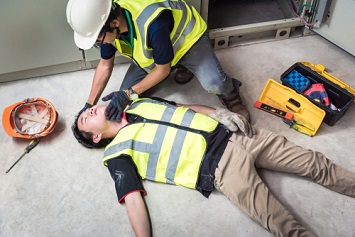Facility managers, or someone on their facilities team, are often designated by their organizations as first aid providers in case of an emergency. As such, you’ll likely find yourself (and your team) required to undergo first aid and CPR training. While that first aid training is indispensable, it turns out that designated first aid/CPR providers require additional training.
Under the federal bloodborne pathogens standard, training must be given to all employees at a facility with a reasonably anticipated risk of occupational exposure to blood or other potentially infectious material (OPIM). “Occupational exposure” is defined as “reasonably anticipated skin, eye, mucous membrane, or parenteral contact with blood or OPIM that may result from the performance of an employee’s duties.”
Facility staff who perform first aid and CPR are reasonably anticipated to have exposure to blood and OIPM. However, the bloodborne pathogens standard and its training requirements will apply only if that exposure “may result from the performance of an employee’s duties.” If you or a team member is trained in first aid and CPR and are designated by your organization as responsible for rendering medical assistance as part of your job duties, there would be an anticipated occupational exposure and the bloodborne pathogens standard and its training requirements would apply. This applies to any employee in the facility designated as a first aid provider who provides assistance at a workplace first aid station, clinic, or other designated location in your facility where injured employees go routinely for assistance. It also includes employees who are expected to provide first aid as a collateral duty to their routine work assignments. In addition, employees who routinely provide first aid and CPR while at work with the knowledge of the employer also may fall under the occupational exposure designation even if you or your organization has not officially designated the employees as first aid providers.
There are three methods to determine whether bloodborne pathogens training should be provided to employees at your facility as part of the first-aid program:
- If an employee provides first aid or CPR as a Good Samaritan and has not been designated to perform first aid by the employer, that employee is not required to have bloodborne pathogens training.
- Employees who render first aid as part of their job duties, i.e., they have been trained or designated through the employer to provide first aid to fellow employees, must receive bloodborne pathogens training when beginning the job and annually thereafter.
- Employers that have a written bloodborne Exposure Control Plan can determine the risk of exposure to specific employees and the level of required training through the plan’s hazard analysis.

